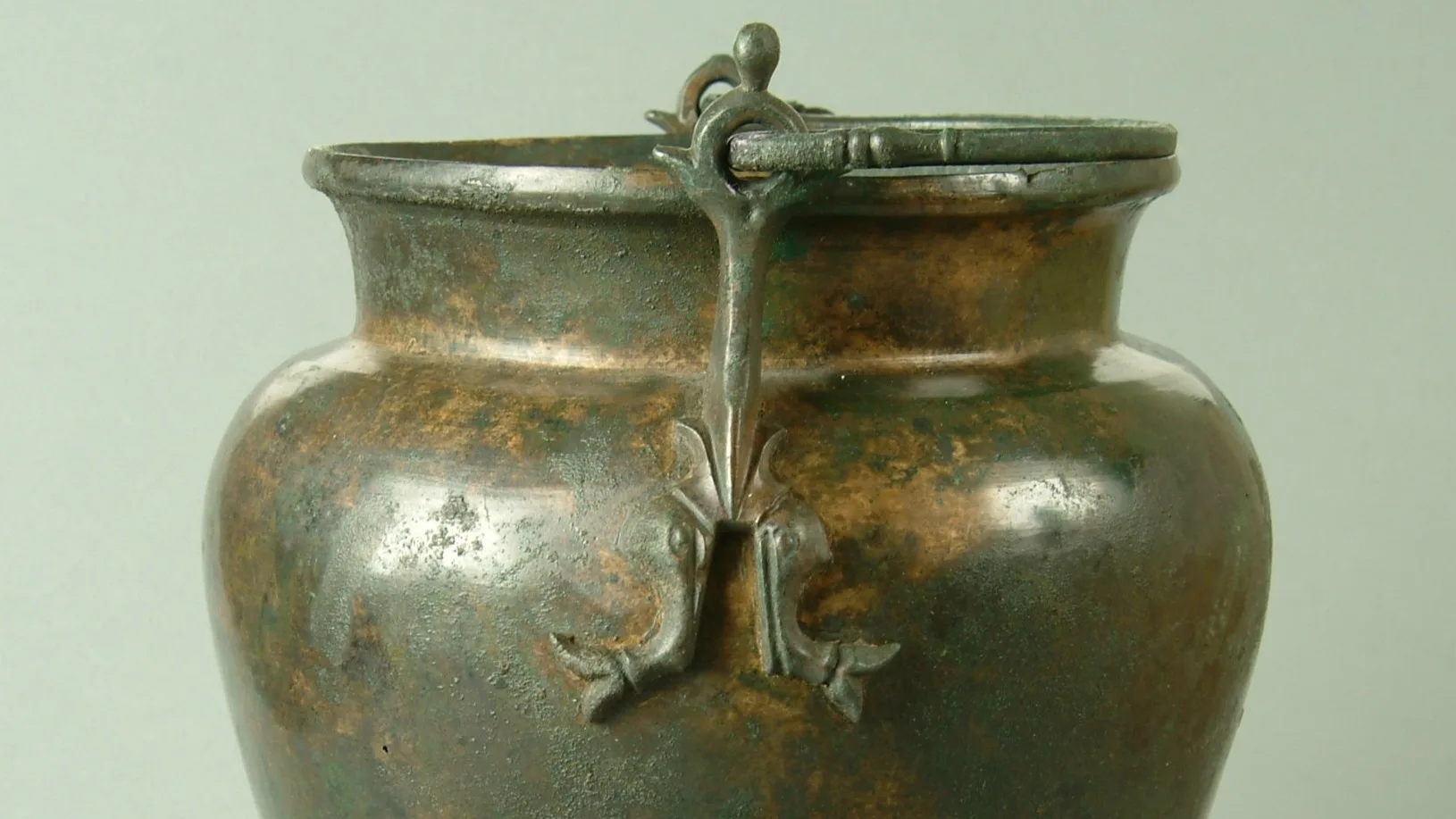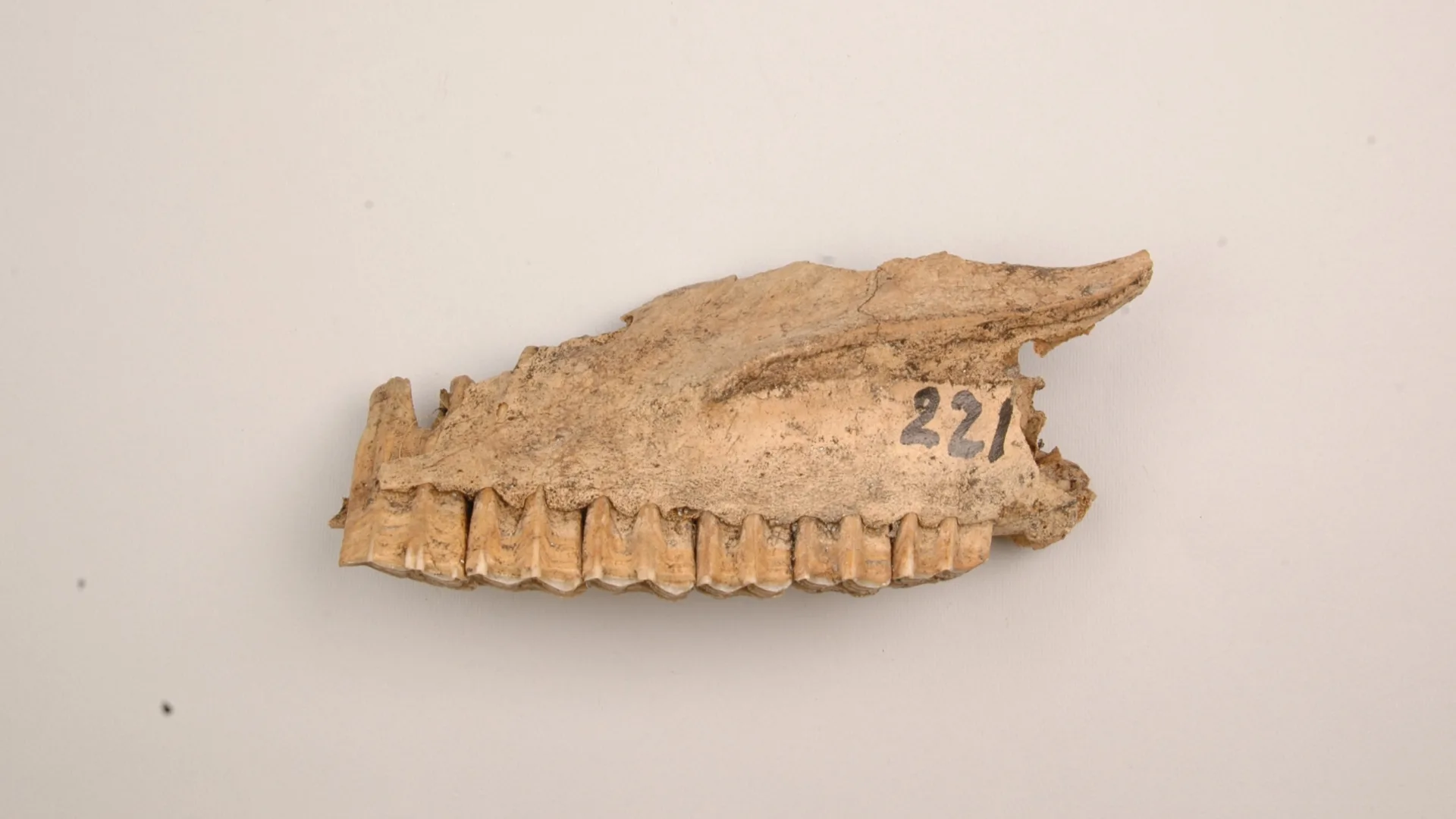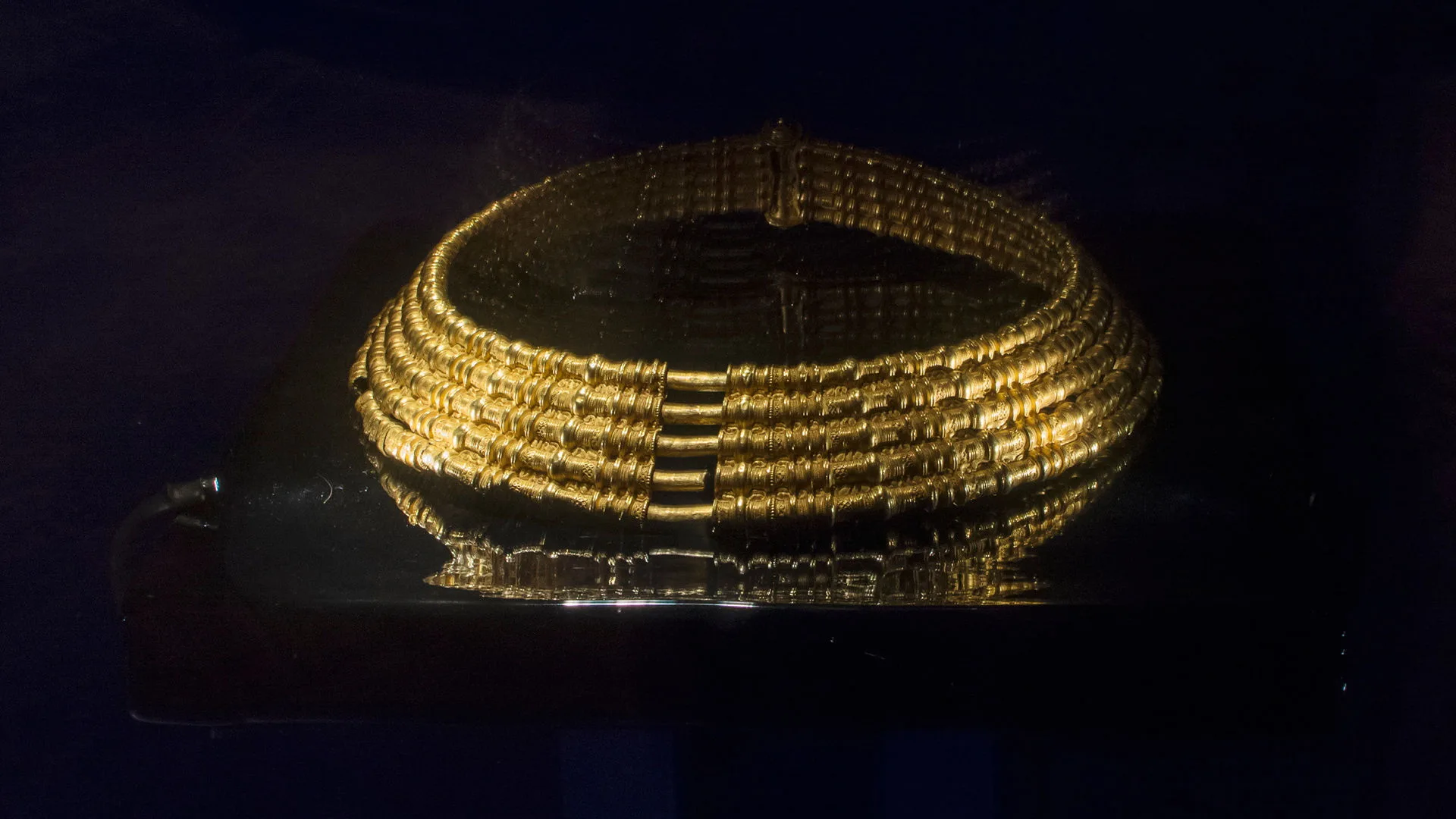A magical ring from the Roman Empire
Bronze Age
1700 BC – 500 BC
Iron Age
500 BC – AD 1100
Viking Age
AD 800 – AD 1100
Set into the top of the ring are three stones: one carnelian and two garnets. On the large carnelian is engraved the Greek phrase: "Eutychi Eunesi" (meaning approximately "Be happy, Eunesios"). Who Eunesios, the happy one, actually was remains unknown. The ring was probably made in one of the eastern provinces of the Roman Empire. A Greek-speaking individual named Eunesios likely wore it as an amulet.
Signet rings were otherwise quite common throughout the Roman world. These were used to seal and “sign” letters by pressing the ring into wax. The inscriptions on such rings were carved in reverse, so that the imprint would appear the right way around.
What specific amuletic power the carnelian was believed to hold remains uncertain. However, throughout the Mediterranean world, it was common to wear rings set with various stones, each thought to possess magical properties. Some were believed to protect against poison, others to kindle love or cure illness.
A status symbol in Södermanland?
The ring was found in 1936 in a field near Berga-Vrå, Kjula parish, in Södermanland. How this Roman-era ring ended up in present-day Sweden is a mystery. Perhaps it was a gift from a Greek to a northerner, spoils of war, plunder, or merely an exotic souvenir brought back to impress neighbours and kin.
How people in Iron Age Scandinavia interpreted the lettering is unknown. It’s also unclear whether they recognised it as writing or simply saw the signs as magical symbols, which may have increased the ring’s value as an amulet.

Gold ring
On view at Historiska museet in the exhibition Guldrummet





